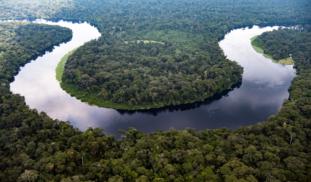6
0
0
Like?
Please wait...
About This Project
Carbon can be removed from the atmosphere and stored in peat through numerous biogeochemical processes, potentially providing a net-cooling effect. The Congo Basin's peatlands store the carbon equivalent of 20 years of fossil fuel emissions from the USA, so protecting this ecosystem is vital. We seek to explore how people, plants and birds function and interact in this ecosystem to provide insight into the state of these peatlands and inform conservation policies accordingly.
More Lab Notes From This Project

Browse Other Projects on Experiment
Related Projects
How do polar bears stay healthy on the world's worst diet?
Polar bears survive almost entirely on seal fat. Yet unlike humans who eat high-fat diets, polar bears never...
Uncovering hidden insect diversity associated with a likely undescribed gall-forming midge
Does a likely undescribed species of gall-forming midge (pers. comm. Ray Gagné) on Eriodictyon plants (Yerba...
Macrofungi of the California archipelago
The eight islands of the California Archipelago are a well-studied biodiversity hotspot — but we know almost...

